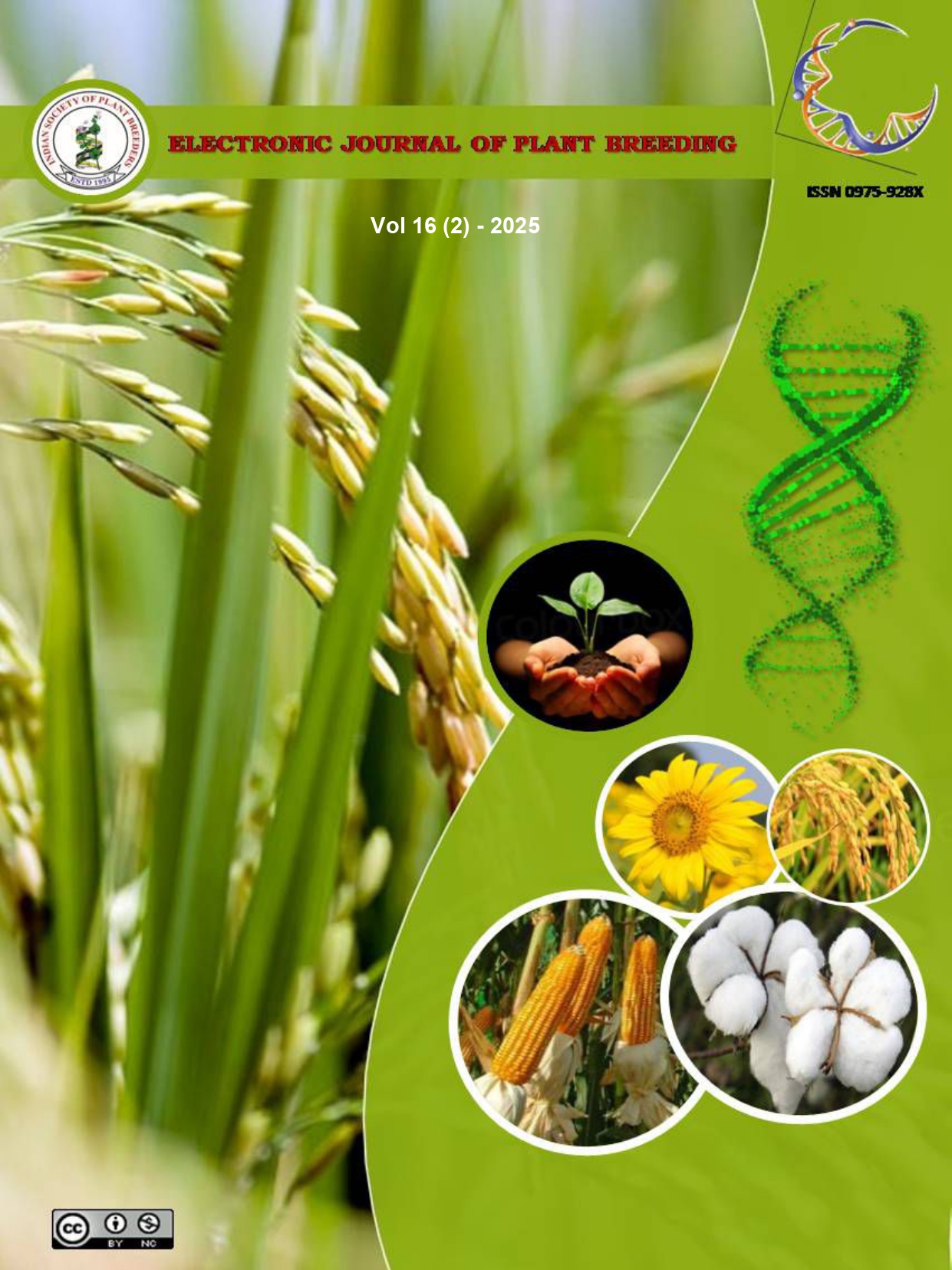Comparative mutagenesis and effect of EMS, Gamma rays and Electron beam on biological parameters of Kalbhat and Black rice (Oryza sativa L.) non-basmati aromatic rice landraces
DOI:10.37992/2025.1602.027
Abstract
Kalbhat and Black rice are two non-basmati scented rice landraces famous for their taste, aroma, and nutritional properties. Mutation was attempted by using ethyl methanesulfonate, gamma radiation, and electron beam in Kalbhat and Black rice. In M1 generation studies, the effect of mutagens on several biological variables was studied, like lethality, chromosomal abnormalities, pollen sterility, and plant survival. In M2 generation studies, different chlorophyll mutants like Albina, Xantha, Chlorina, and Viridis were identified. The frequency of chlorophyll mutants was relatively higher in Black rice (9.54) as compared to Kalbhat (7.72). Mutagenic effectiveness and efficiency with respect to seedlings height, lethality, and pollen sterility were studied, and the maximum effectiveness and efficiency were observed in EMS treatment in both Black rice and Kalbhat.The lethality and pollen sterility was maximum in EMS treated Kalbhat, while mutagenic efficiency in terms of seedlings height and pollen sterility were maximum in the electron beam treated black rice. EMS was found to be more effective and efficient than gamma radiation and electron beam treatment in both the landraces.
Keywords: Black rice, Effectiveness, Kalbhat, landraces, Mutation frequency.
Comparative mutagenesis and effect of EMS, Gamma rays and Electron beam on biological parameters of Kalbhat and Black rice Oryza sativa L. non-basmati aromatic rice landraces
. 2025. Electronic Journal of Plant Breeding, 16 2, 216-224. Retrieved from https://ejplantbreeding.org/index.php/EJPB/article/view/5328It is certified that:
- The corresponding author is fully responsible for any disputes arising due to the publication of his/her manuscript.
- The article has been seen by all the authors who are satisfied with its form and content.
- The sequence of names of authors in the by-line is as per their relative contribution to this experiment, giving due credit to all scientists who made notable contribution to it.
- All the authors fully understand that inclusion of any other co-authors or exclusion of any co-authors is not possible once the article has been submitted to the journal.
- The corresponding author takes full responsibility for this article.
- The address of the organization where the research was conducted is given.
- The article is exclusive for this journal, and the results reported here have not been sent (and will not be sent during its consideration by this journal) for publication in any other journal.
- Authors agree to abide by the objective comments of referees and do agree to modify the article into a short note as per the recommendation, for publication in the Electronic Journal of Plant Breeding.
- If published in Electronic Journal of Plant Breeding, the copyright of this article would vest with the Indian Society of Plant Breeders, who will have the right to enter into any agreement with any organization in India or abroad engaged in reprography, photocopying, storage and dissemination of information contained in it, and neither we nor our legal heirs will have any claims on royalty.



